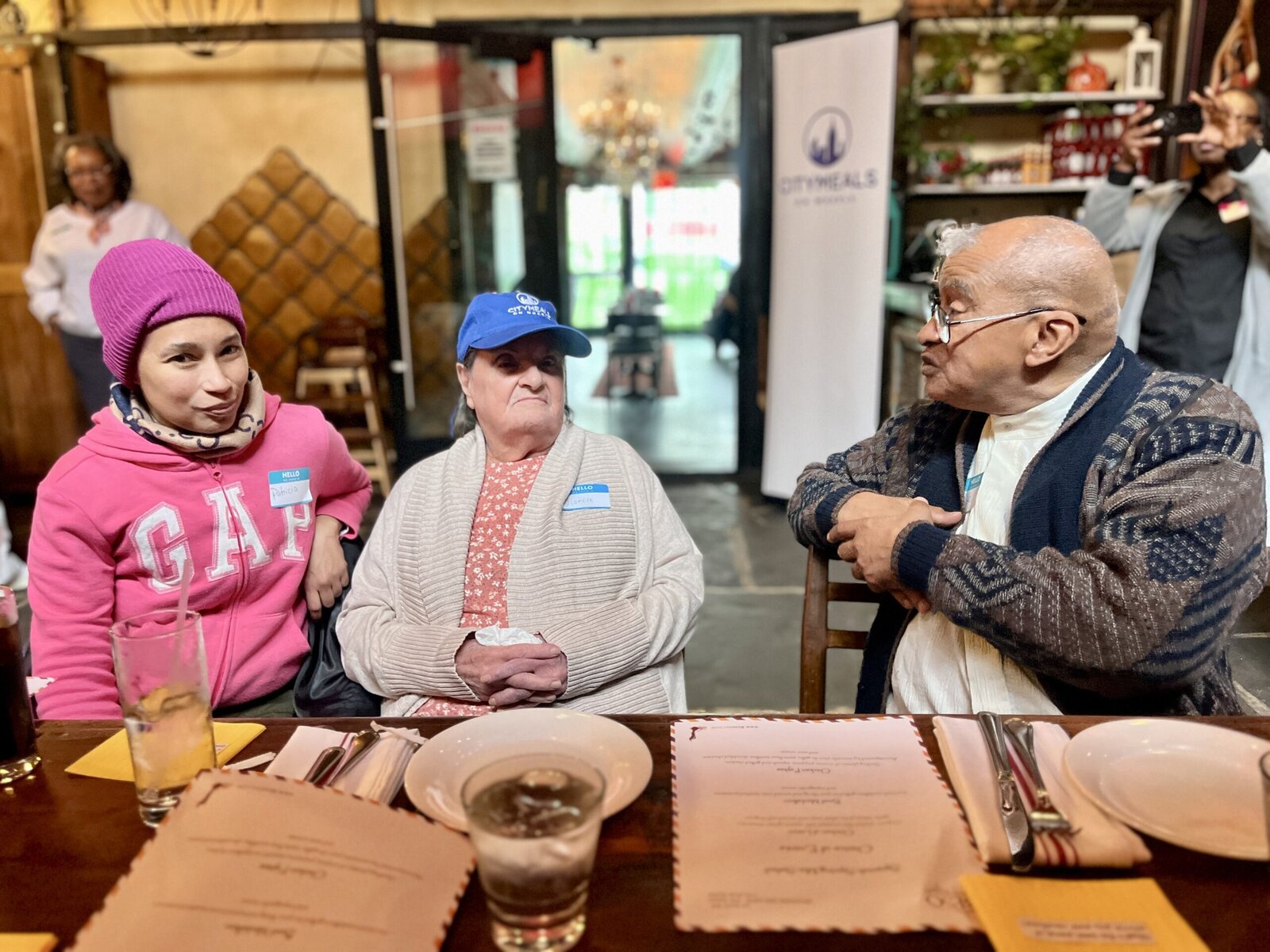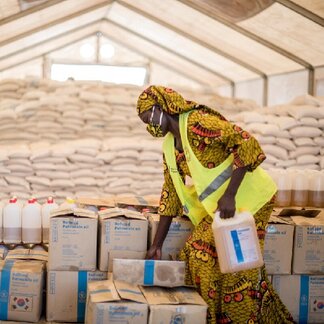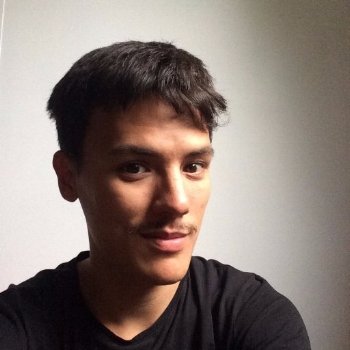Bulbous green squashes larger than a young child are piled up on the floor of Faridah Nakayiza’s lounge. Outside, a thick branch of freshly cut, bright yellow bananas is balanced on the back of her bicycle. Over in her backyard, a small oasis of tropical vegetation, a cluster of juicy papayas hangs from the trees.
“Before I looked older, but now I look much younger,” says Nakayiza, a 44-year-old from the village of Bulugu in central Uganda. “It’s because I can feed myself better, I can eat all kinds of nutrients. And I grow it all myself.”
The upturn in Nakayiza’s fortunes began in 2018 when the mother of eight signed up at a local facility known as an “epicenter.” These spaces, launched by global nonprofit The Hunger Project, offer a range of ecological and agricultural services to about a dozen nearby villages. They have been the catalyst for empowering communities to feed themselves — with the aim of finally putting an end to the scourge of world hunger.
At Uganda’s 12 epicenters, which each serve up to 15,000 people, community members are taught how to set up and manage communal farms. They learn regenerative agriculture practices such as composting, intercropping and drip irrigation. These techniques have in turn helped promote biodiversity and improve crop yields and soil fertility. Epicenters take a holistic approach to fighting hunger: they usually include a bank, a nursery school, toilets, clean water and a medical clinic.
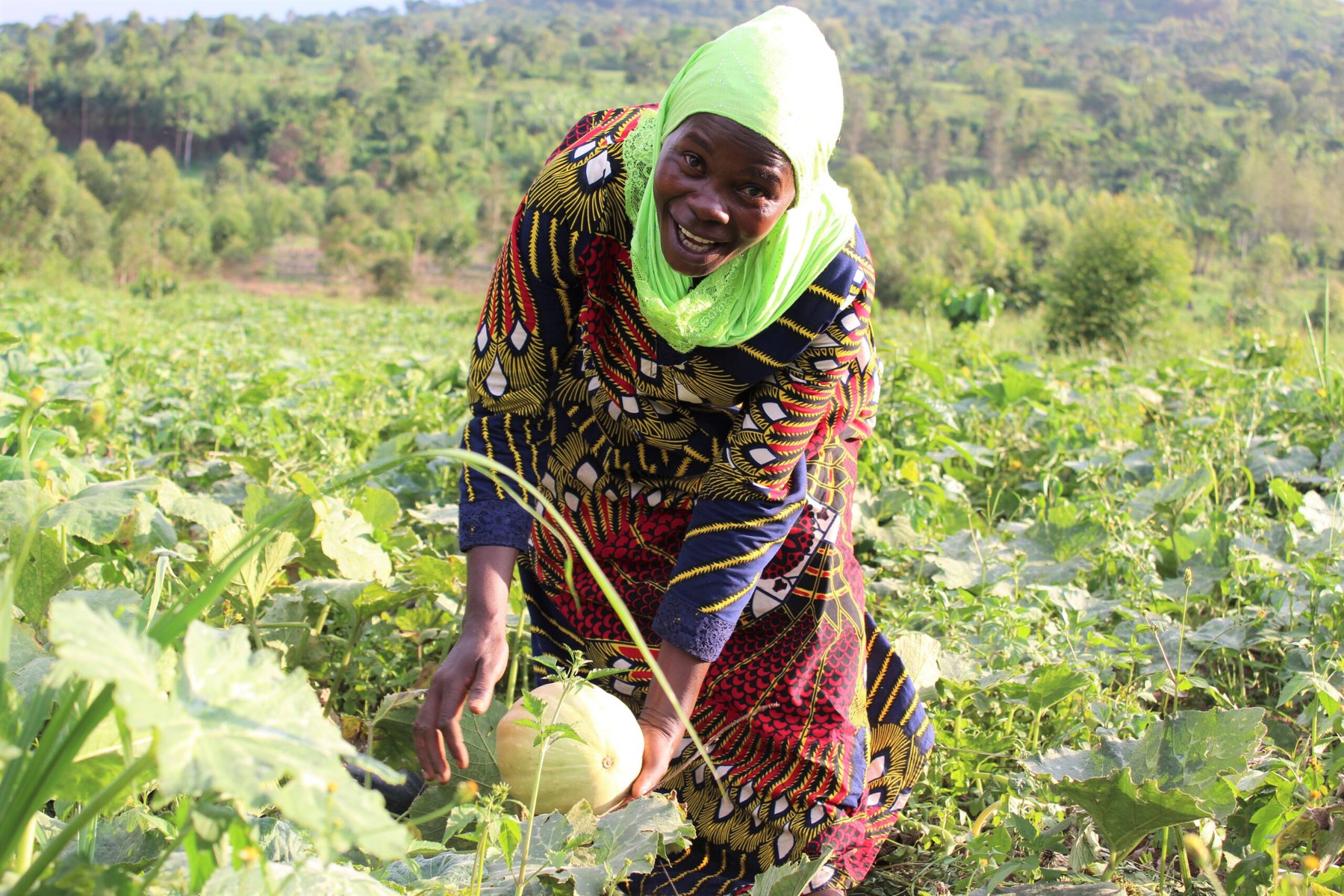
Each is run by a leader elected by the villagers, and soon after taking the post, they hold a workshop together to identify the community’s most pressing issues – such as health care, access to water, or food insecurity — to inform how the epicenter will be run. The leaders are supported by voluntary “animators” who help mobilize the community. After five years, the epicenter must become self-reliant — meaning it must run without external support. Ten have already reached this benchmark.
The Hunger Project’s model runs contrary to past efforts to cut malnutrition across rural Africa, according to Irene Naikaali, the nonprofit’s country director for Uganda. During the 1980s and ’90s, development aid was focused on programs to deliver food and supplies — but ones that always disappeared once the funding dried up. Long-term food security, she argues, can only be achieved if people are independent.
“We felt the charity-based approach was not helping our communities to become self-reliant,” says Naikaali. “The best way of solving world hunger is not a ‘relief’ model that creates dependency and so actually worsens the problem. Communities have to be at the forefront of anything that will work in the long term.”
That may help explain why, despite decades of efforts, world hunger is far from being eliminated. More than 345 million people across the globe are expected to face “high levels of food insecurity” in 2023, according to the United Nations’ World Food Programme, which represents a rise of 200 million people compared to pre-pandemic levels. About nine million people die every year, or 24,000 people per day, from hunger.
Across the Horn of Africa, which includes Uganda and seven other nations, the issue has been compounded by conflict, increasing food prices and the longest drought in 40 years. Today, 36.4 million people in the region are suffering from hunger.
“It’s a double-edged sword,” says Julian May, director of the Centre of Excellence in Food Security at the University of the Western Cape, South Africa. “You’re faced with starving people, so we’re flying in cheap corn from the USA to feed the population. But this displaces the possibility of local markets developing within the population.”
Yet The Hunger Project’s approach is clearly bearing fruit. The nonprofit works with 7,630 households, or about 35,000 people, in Uganda. Over the past two decades, the proportion of Ugandans suffering from hunger has fallen by 58 percent and those suffering severe hunger by 73 percent. Only one percent still face severe hunger.
Faridah Nakayiza says that before she took on the training, even though she grew her own food, she would often struggle to feed her children. “I used to have difficulties accessing food,” she says. “My children would have little before they went to school.”
But over the course of four years, she attended dozens of trainings — including classes on increasing crop production and seed management — at the nearest epicenter, which is about five kilometers from her home. “Now there’s much more, we have excess,” says Nakayiza, who grows bananas, cassavas, pumpkins and more.
By empowering individuals to be self-sufficient, the epicenters also play a role in improving gender equality, as women become more independent. “In Uganda, men usually control everything,” Nakayiza says. “But this shows women like me can provide.”
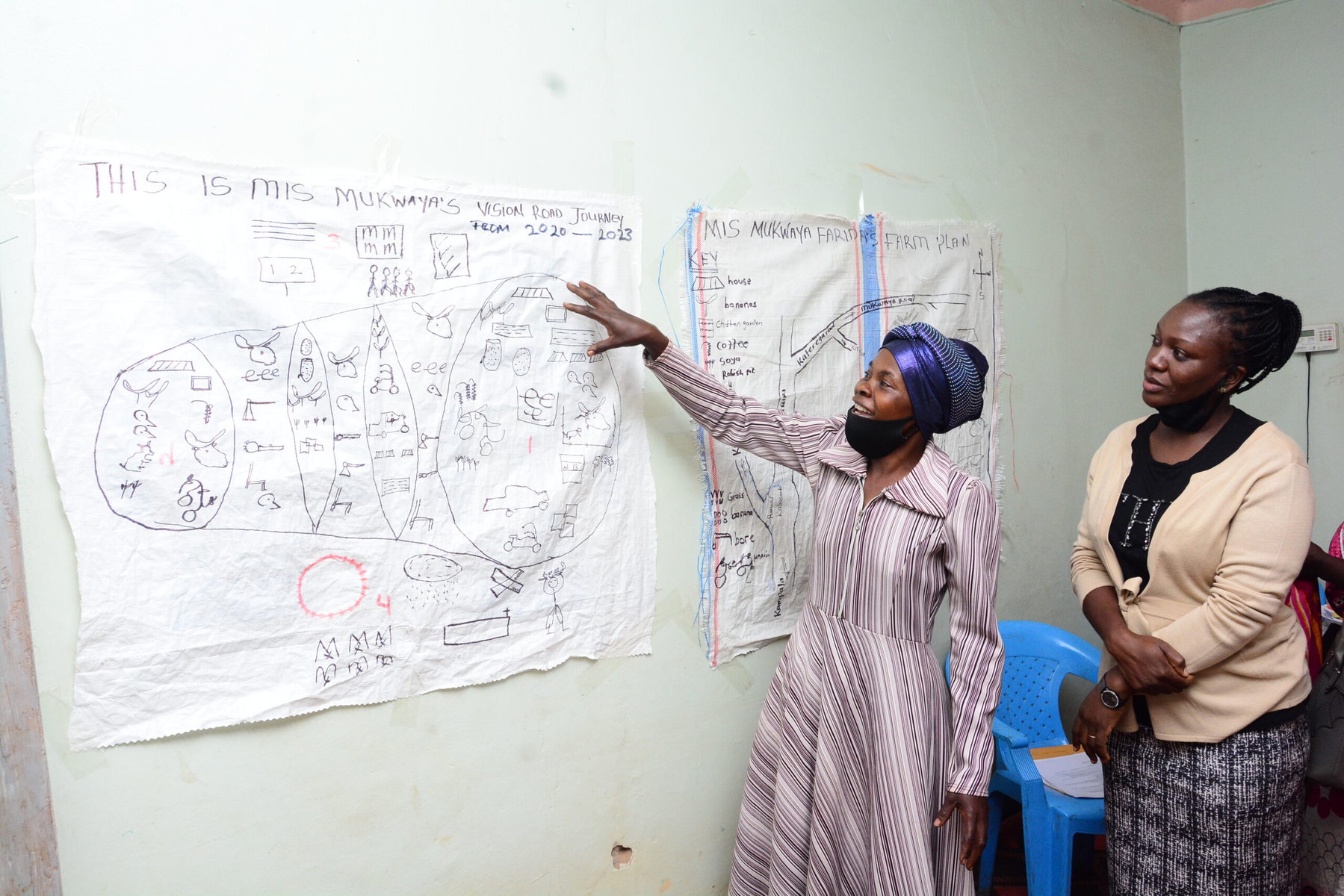
But with the improvements in production came another challenge: food waste. Families were able to feed themselves, but struggled to use or sell the excess. The UN estimates that worldwide, 14 percent of all food produced is lost between harvest and retail. “We concentrated so much on production,” says Naikaali. “But food security relies on them being able to preserve their food, store it, process and add value.”
In response, The Hunger Project has trained 11,622 people in food processing, and 1,306 households are using food banks to store food long-term. “You won’t go wanting in the next month,” says Nakayiza, who has built a micro processing factory on her land to process millet, soy and pumpkin, which she and her family dry and grind to preserve it.
However, since The Hunger Project began its work in Uganda in 1999, progress has not always been so organic. Conflict across the country has meant some communities remain difficult to reach, even now. And coordination with local government and other nonprofits working in the same region requires major ongoing effort.
“While we focus on making communities self-sufficient, other partners still give them paid stipends, which can water down their motivation,” says Naikaali. “And once the government sees us working in a region, they often hand everything over to us, even though we are only supposed to supplement the work of the government.”
In the case of one of Uganda’s epicenters, Mbale, surveys show that levels of hunger rose significantly between 2015 and 2018. The Hunger Project said this could have been due to “climate shocks and pest invasions” or the fact that the 2018 survey was carried out during harvest, when little food remained in the fields. It added that despite those issues, there was an 88 percent increase in households that own businesses in Mbale.
Professor May warns, too, that the complexity of food security means that it will not be solved easily: food production is one aspect, but affordability is another, as is the extent to which the available food is nutritious and can be consumed safely. “Each of those dimensions makes it difficult to achieve food security,” he says.
But May also points to various other efforts already underway on the continent. Two million Rwandans, a fifth of the population, were moved out of food insecurity in just five years due to a focus on science-led policy and localized responses. Nigeria has restricted the imports of food products like rice in a successful effort to boost local agriculture. Many African countries also signed up to the Malabo Declaration in 2014, agreeing to invest their budgets into accelerated agricultural growth.
Weighed down by negative news?
Our smart, bright, weekly newsletter is the uplift you’ve been looking for.“There’s growing recognition of the value of territorial or place-based approaches to food systems,” says May. “You can strengthen the food system to not only feed people but so that it becomes an economic force, a source of livelihoods.”
Going forward, the plan in Uganda, and for women like Nakayiza, is to better link epicenters with markets across the region — to help spread the gains of this self-reliant, community-led success in the battle to end world hunger.
“Faridah of today is no longer the Faridah of yesterday,” says Nakayiza, who wants to increase the size of her food processing factory and develop a brand for her products. “The Faridah of tomorrow is even better than now.”





